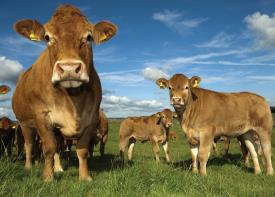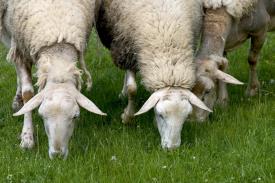What is bluetongue?
Outbreaks of bluetongue affect farm incomes through reduced milk yield, sickness, reduced reproductive performance (failed pregnancies, abortion, central nervous system deformities in the calf or lamb) or, in severe cases, the death of adult animals.
Bluetongue virus does not affect people and consumption of meat and milk from infected animals is safe. Bluetongue is a notifiable disease.
That means if you suspect an animal is showing signs of disease you must tell the Animal and Plant and Health Agency (APHA) immediately. Failure to do so is an offence.

